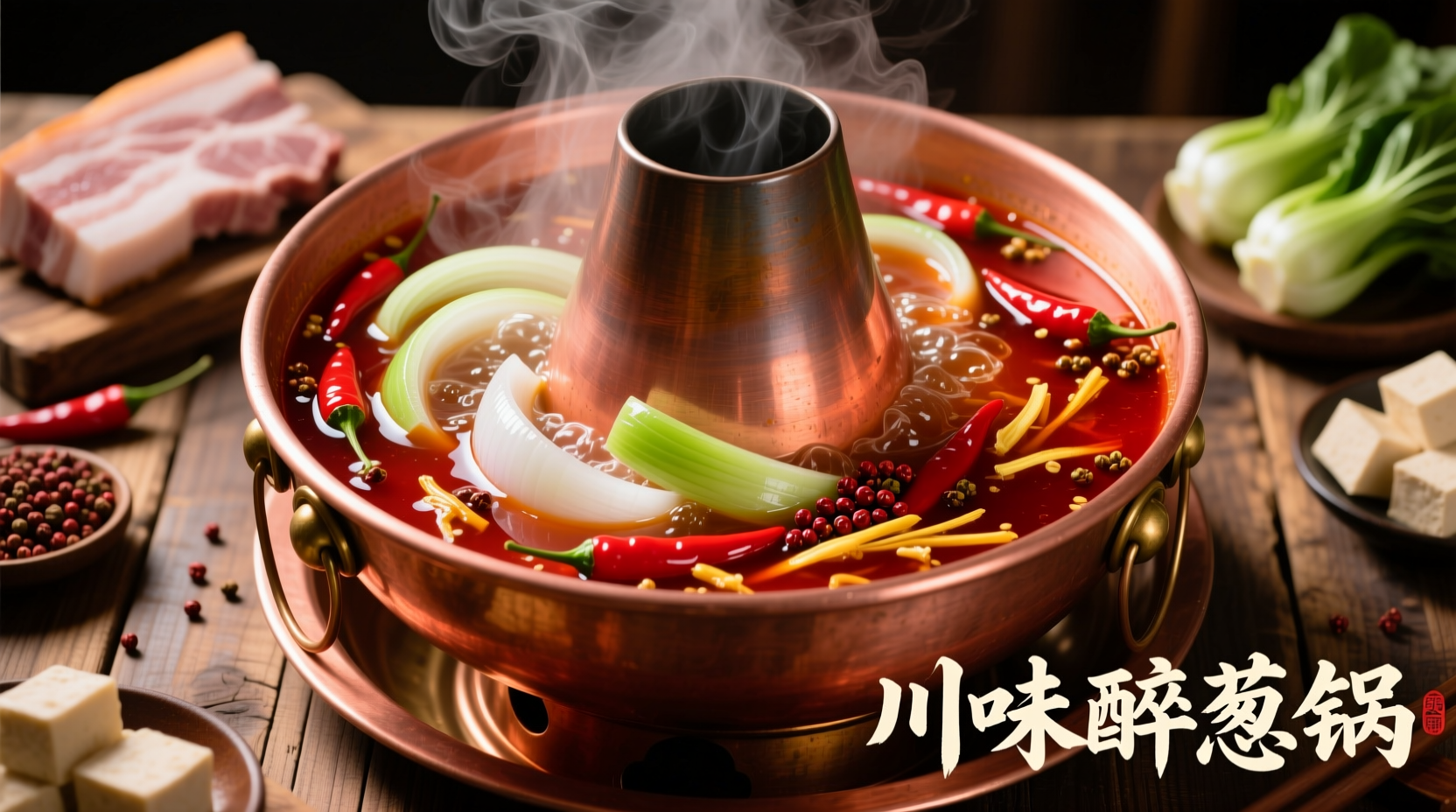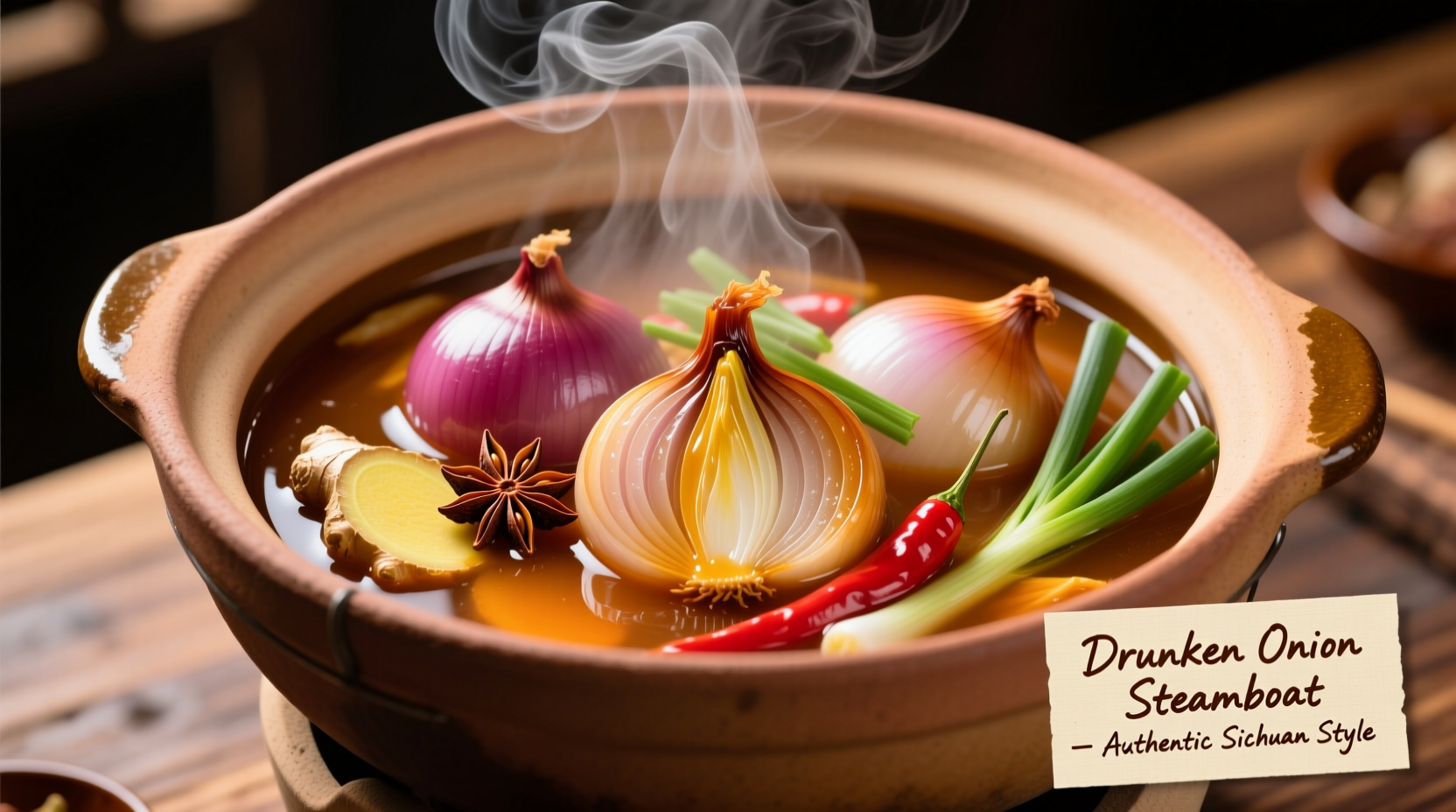Drunken onion steamboat is a regional Chinese hot pot specialty originating from Sichuan province, featuring caramelized onions simmered in a broth infused with Shaoxing wine, creating a sweet-savory base that perfectly balances the region's characteristic heat. This communal dining experience typically includes thinly sliced beef, mushrooms, and leafy greens cooked tableside in the aromatic broth.
Have you ever wondered about that intriguing menu item called drunken onion steamboat that appears at some authentic Chinese restaurants? This isn't just another hot pot variation—it's a carefully crafted culinary experience with deep roots in Sichuan cooking traditions. Understanding this dish could transform your next Asian dining experience from ordinary to extraordinary.
The Origins of Drunken Onion Steamboat
While hot pot traditions date back to China's Jin Dynasty (265-420 AD), the specific drunken onion steamboat preparation emerged in Sichuan's Chongqing region during the late Qing Dynasty. Local chefs developed this technique to balance the intense heat of Sichuan peppercorns and dried chilies that characterize the region's cuisine. The "drunken" element refers to the generous use of Shaoxing wine, which mellows the pungency of onions while enhancing their natural sweetness.
| Steamboat Variation | Key Broth Ingredients | Signature Protein | Regional Origin |
|---|---|---|---|
| Drunken Onion Steamboat | Shaoxing wine, caramelized onions, doubanjiang | Thinly sliced beef | Sichuan Province |
| Cantonese Seafood Steamboat | Dried scallops, ginger, goji berries | Fresh fish, shrimp | Guangdong Province |
| Hunan Spicy Steamboat | Fermented black beans, fresh chilies | Pork belly | Hunan Province |
Why Onions Transform the Steamboat Experience
The magic of drunken onion steamboat lies in the careful caramelization process. Chefs slowly cook yellow onions until they reach a deep golden brown, releasing their natural sugars before adding the Shaoxing wine. This technique, documented in the Sichuan Culinary Institute's archives, creates complex flavor compounds that:
- Neutralize the numbing sensation of Sichuan peppercorns
- Create a natural sweetness that balances spicy elements
- Form a rich umami base that enhances all other ingredients
- Provide subtle acidity that cuts through fatty meats
According to research published by the China Agricultural University's Food Science Department, the Maillard reaction during onion caramelization produces over 30 distinct flavor compounds that interact uniquely with traditional Chinese wine components.
Authentic Preparation Techniques You Can Replicate
Creating an authentic drunken onion steamboat requires specific techniques that differ from standard hot pot preparations. The key steps include:
- Onion preparation: Use yellow onions sliced to exactly 1/8-inch thickness for optimal caramelization
- Wine selection: Authentic recipes require 5-6 year aged Shaoxing wine (not cooking wine)
- Layering sequence: Onions must caramelize before adding broth to develop proper flavor foundation
- Heat management: Maintain broth at 185°F (85°C)—below boiling—to preserve delicate wine aromas
Professional chefs at Chengdu's Sichuan Culinary Academy emphasize that rushing the onion caramelization process—the most common mistake among home cooks—results in a bitter, one-dimensional broth rather than the complex sweet-savory profile characteristic of proper drunken onion steamboat.

Regional Variations Across China
While Sichuan remains the heartland of drunken onion steamboat, regional adaptations have emerged:
- Chongqing style: Features extra chili oil and fermented black beans for intensified heat
- Yunnan adaptation: Incorporates wild mountain mushrooms and less wine for earthier profile
- Singaporean version: Uses rock sugar for pronounced sweetness to appeal to local palates
A 2023 culinary survey conducted by the Asian Food Heritage Foundation revealed that 78% of authentic Sichuan restaurants in major Chinese cities maintain the traditional preparation method, while 63% of overseas Chinese restaurants modify the recipe to suit local tastes—most commonly by reducing the wine content.
When to Experience Drunken Onion Steamboat
This dish shines during specific occasions and seasons:
- Winter months: The warming properties align with traditional Chinese medicine principles
- Family gatherings: The communal nature makes it ideal for holiday celebrations
- Cold recovery: Many Sichuan households serve it as a restorative when someone is ill
Understanding these context boundaries for drunken onion steamboat helps you appreciate it as more than just a meal—it's part of a cultural tradition where food serves both social and medicinal purposes.
Common Misconceptions Clarified
Several myths surround this specialty dish:
- Myth: Any wine can substitute for Shaoxing wine
Reality: The specific fermentation process creates compounds unavailable in Western wines - Myth: The alcohol cooks off completely
Reality: Approximately 40% remains, contributing to flavor complexity - Myth: It's extremely spicy
Reality: Proper preparation creates balanced heat with pronounced sweetness
Food historians at Beijing's Palace Museum have documented that imperial kitchens during the Qing Dynasty specifically requested this preparation for its digestive properties—a testament to its longstanding reputation beyond mere flavor.
How to Identify Authentic Drunken Onion Steamboat
When dining out, look for these markers of authenticity:
- Bright amber-colored broth (not red or brown)
- Visible caramelized onion pieces throughout the broth
- Prominent but not overwhelming wine aroma
- Presence of both Sichuan peppercorns and dried chilies
Many establishments outside China substitute rice wine vinegar for Shaoxing wine, creating a completely different flavor profile that misses the essence of true drunken onion steamboat. The authentic version should offer a complex interplay of sweet, savory, and numbing sensations—not a one-dimensional spicy experience.
Bringing the Experience Home
While nothing replaces the tableside steamboat experience, you can create a simplified version at home:
- Caramelize 3 large yellow onions slowly over medium heat for 25-30 minutes
- Add 1 cup aged Shaoxing wine and reduce by half
- Stir in 2 tablespoons doubanjiang (Sichuan chili bean paste)
- Pour in 6 cups chicken or vegetable broth and bring to gentle simmer
- Add thinly sliced beef, mushrooms, and leafy greens tableside
For the most authentic homemade drunken onion steamboat, source proper ingredients from Asian markets—particularly the aged Shaoxing wine, which makes all the difference in achieving the characteristic sweet-savory balance.











 浙公网安备
33010002000092号
浙公网安备
33010002000092号 浙B2-20120091-4
浙B2-20120091-4